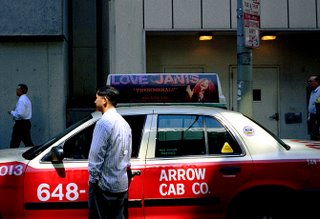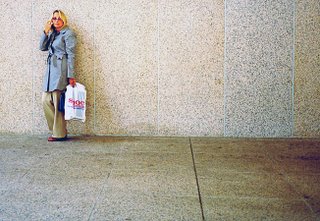I lent my scale out about a month ago (for a week) and was not able to get it back (until this last weekend). So, when my backlog of unprocessed b&w film hit 14 rolls, I stopped shooting black and white film and switched to shooting color film. I don’t need the instant gratification of digital, but I like to see how things are going, especially when I’m working in fairly unfamiliar territory—namely, color. So, by paying for “process-only/no-cut” color negatives from a couple of trusted one-hour labs I was able to satiate my need to see—without feeling the decadence of digital. I am still shooting film after all.
I’ve shot with color, but not to the extent that I have with b&w. There is a big difference between the two, and not the most obvious one, either. For one thing exposure latitude is different. Knowing how to handle the f-stop ring when shooting with color takes a little getting used to. Color balance is tricky too, especially when over or under-exposing.
Shooting with color opens up a lot of possibilities and can be very flexible. You can make excellent b&w images from color negatives, especially if you’re somewhat proficient in Photoshop.
Shooting in color is a different mindset, entirely. Wayne a fellow RFF’er defined the differences between shooting color and shooting b&w (Here in this thread) as:
"I use color film if I want to show you something and I use B&W film if I want to tell you something"
I can subscribe to this, somewhat. It's an interesting and catchy distinction. When I load color film I don't make this distinction, consciously. When viewing color images I don't necessarily feel this distinction, either. But it's interesting, nonetheless, and worth thinking about.
When I shoot color, I find that I look for that extra plane, or level (color), when composing, or seeking out shots.

However, with Photoshop (as with most other image editing programs) knowing that I can "go to b&w" gives me the ability to shoot with color film and think in black and white, too.


However, while shooting color is pretty flexible, there's no subtitute for the real thing. It's nice to be back shooting with black and white film.

